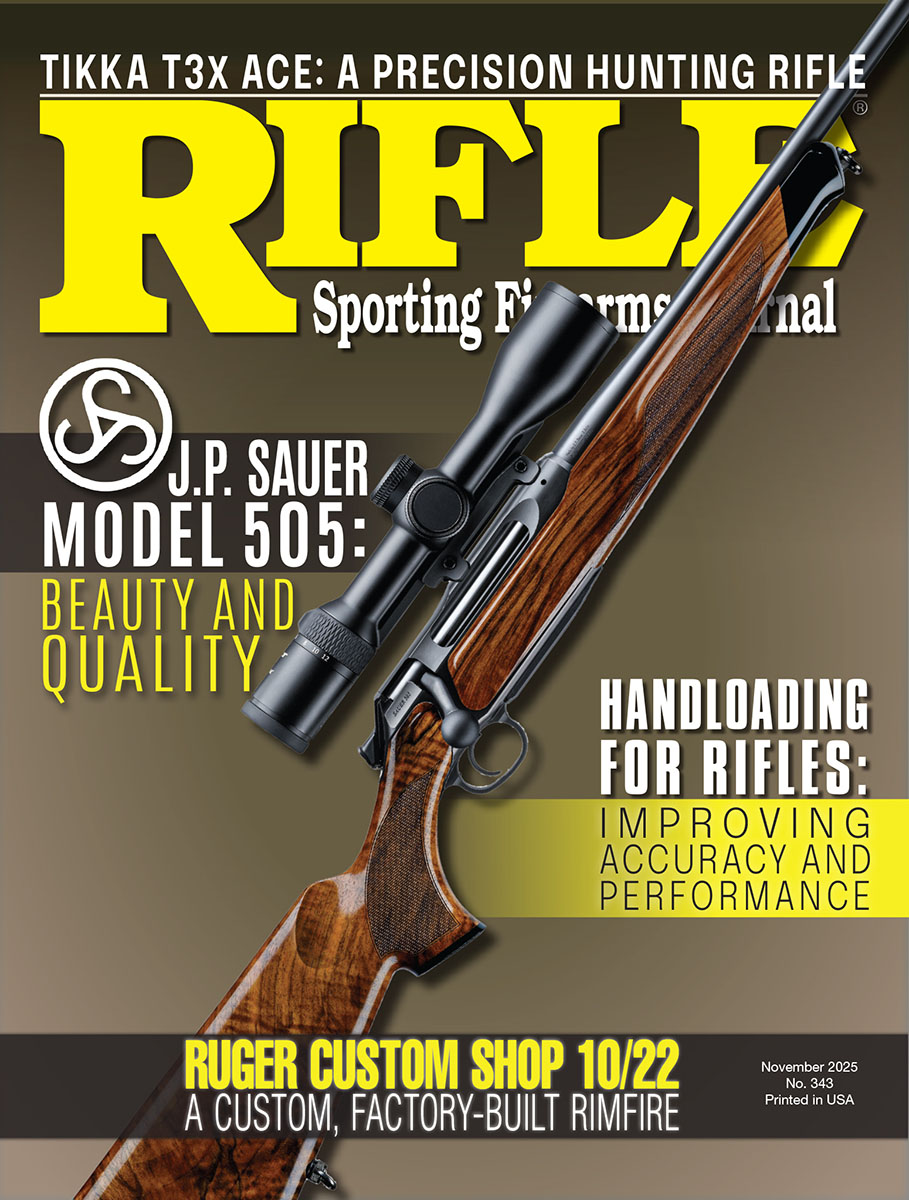Light Gunsmithing
The Siamese Mauser Action
column By: Gil Sengel | November, 25
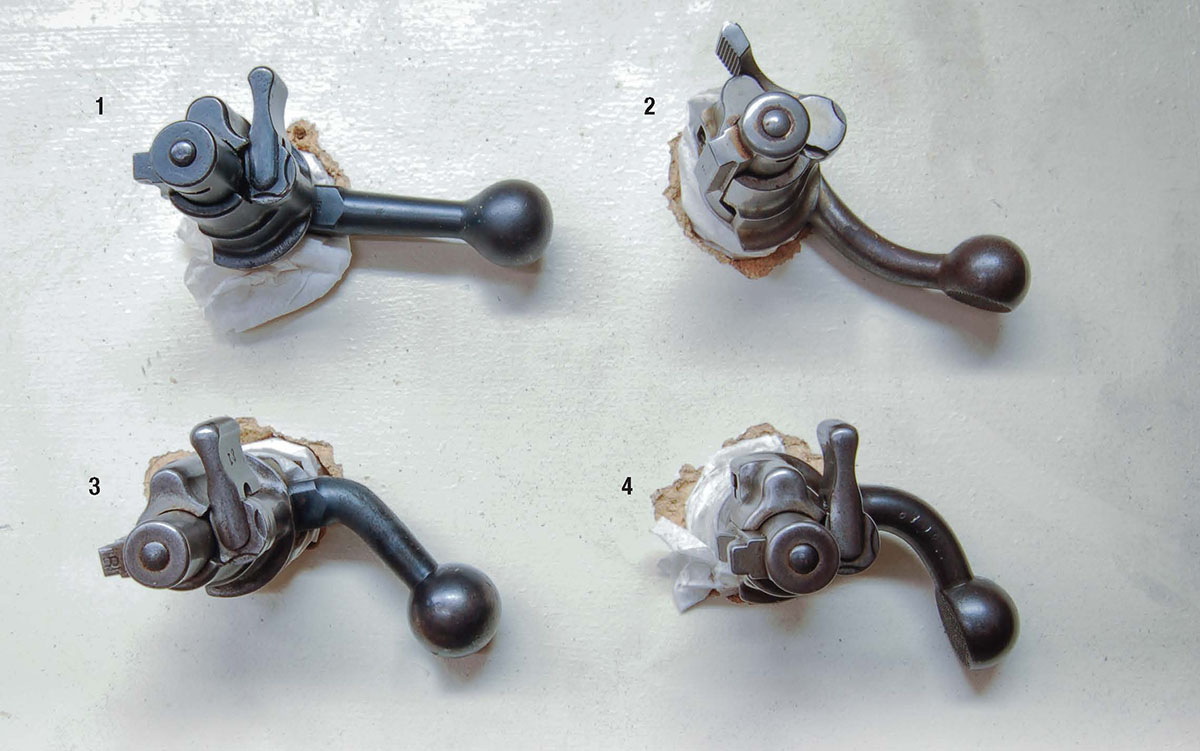
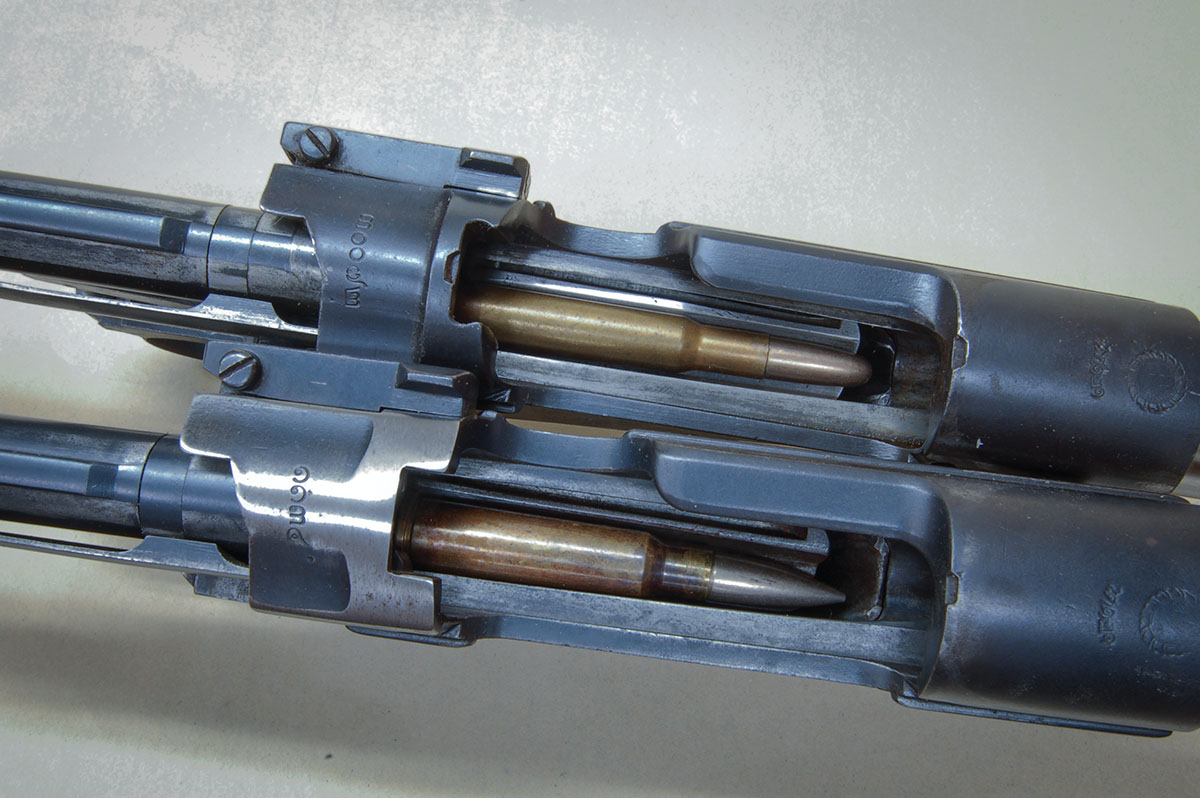
Not everyone has succumbed to the Modern Sporting Rifle (MSR) craze. This was proven one day by a knock on the shop door. It was an old friend who collected all forms of British and European bolt-action sporters and had the resources to afford them. He was obviously very happy.
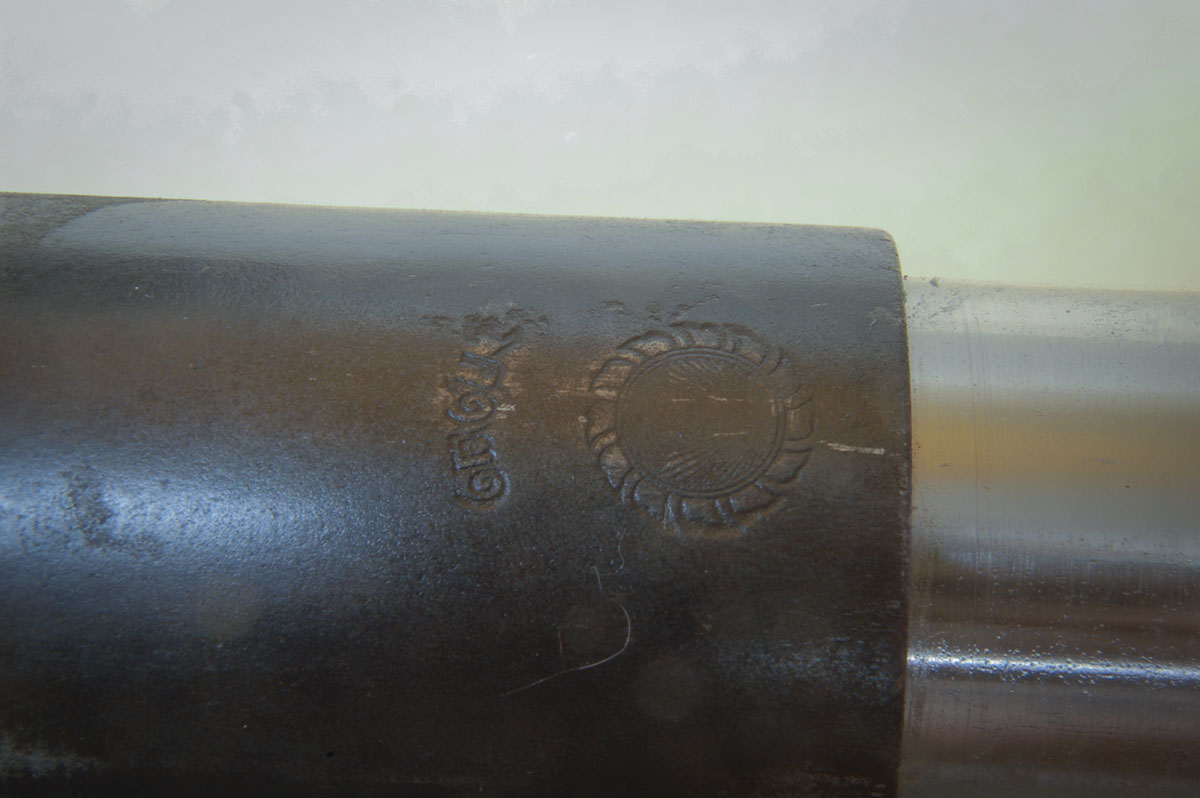
“Look what I found,” he blurted out, pulling a very early Mauser sporter from a soft case. The barrel was marked “.303.” “But that’s a rimmed cartridge,” I replied! “Just open the floorplate,” the owner said, grinning. I did and saw the front and rear of the magazine box slanting rearward! Here was one of the ultra-rare, slant-box Mausers specially made for the 303 British cartridge about 1900. The reason for this background will be obvious in a moment. The chronicles tell us that in 1898, the firm of John Rigby & Co. inked a contract with Mauser giving Rigby exclusive rights to import Mauser rifles, actions and barreled actions into Britain and its colonies. Rigby asked Mauser to modify its then-new M98 action to handle Rigby’s also new 400–350 Rigby (350 Rigby No. 2) cartridge. This round used a rimmed case instead of a rimless design, one would expect in a bolt-action rifle. Nobody seemed to notice.
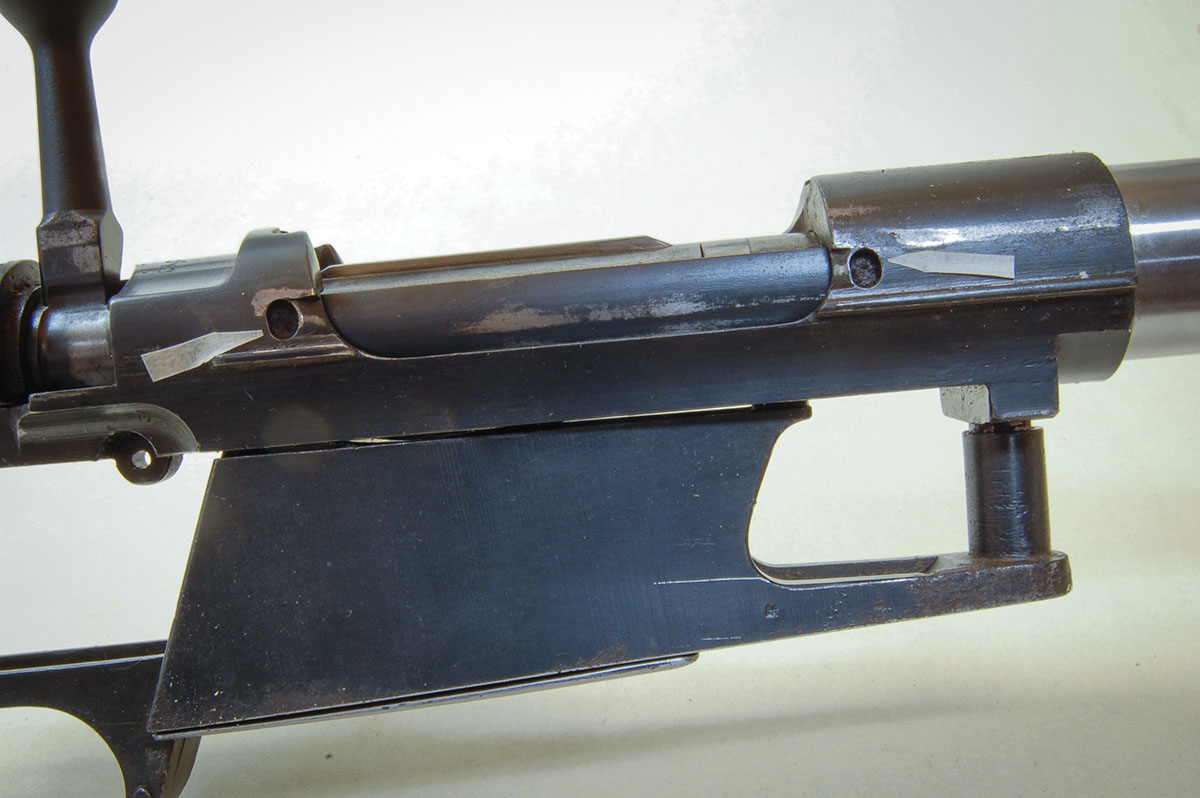
At about the same time, Rigby supposedly asked Mauser for an action to fit the 303 British, also a rimmed round. It appears that a Mauser rifle in sporting form had been assembled by 1898 or 1899.
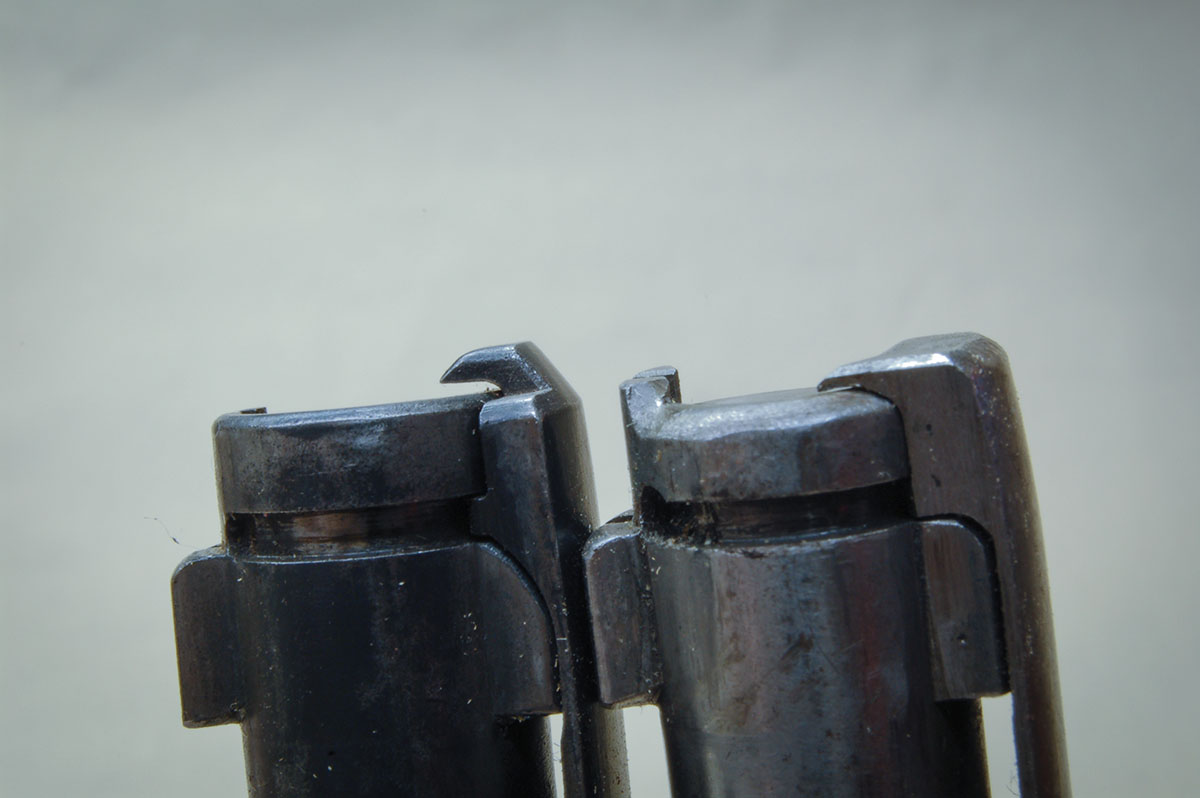
That’s pretty quick. Could it be that Mauser already had an action that could feed rimmed cases, even before Rigby asked for the .400-.350 size? The action was smaller, compensating for the 8mm rimmed cartridge having the same overall length and rim diameter as the 303 British round. When Rigby learned of this, he bought the action, and perhaps even barreled actions, in the white, to finish into .303 sporting rifles in Britain.
What could this unknown cartridge have been? At this same time, the country of Siam (now Thailand) was looking to replace its Mauser M1871 military rifles. It was logical that the country turned to Mauser, who made up samples using an M98 action and the usual military features. However, the cartridge was a rimmed bottleneck filled with compressed black powder called the Siamese Type 45. Today it’s the 8x50Rmm Siamese. Siam adopted the rifle and cartridge, but for some reason had the rifle made in Japan. They were made, delivered and disappeared.
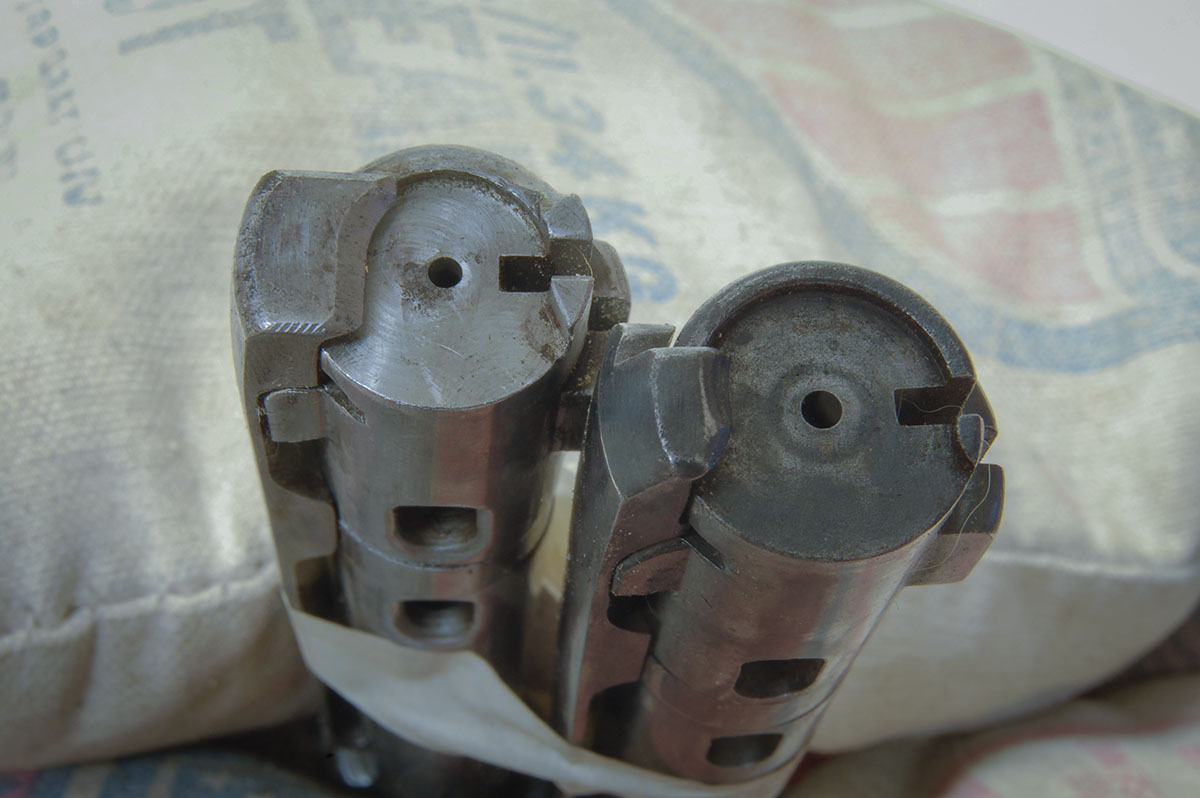
In this 1899-1900 time frame, something else strange happened. Mauser produced a M98 bolt-action rifle in the early sporter style chambered in 303 British. The quantity made varies from a
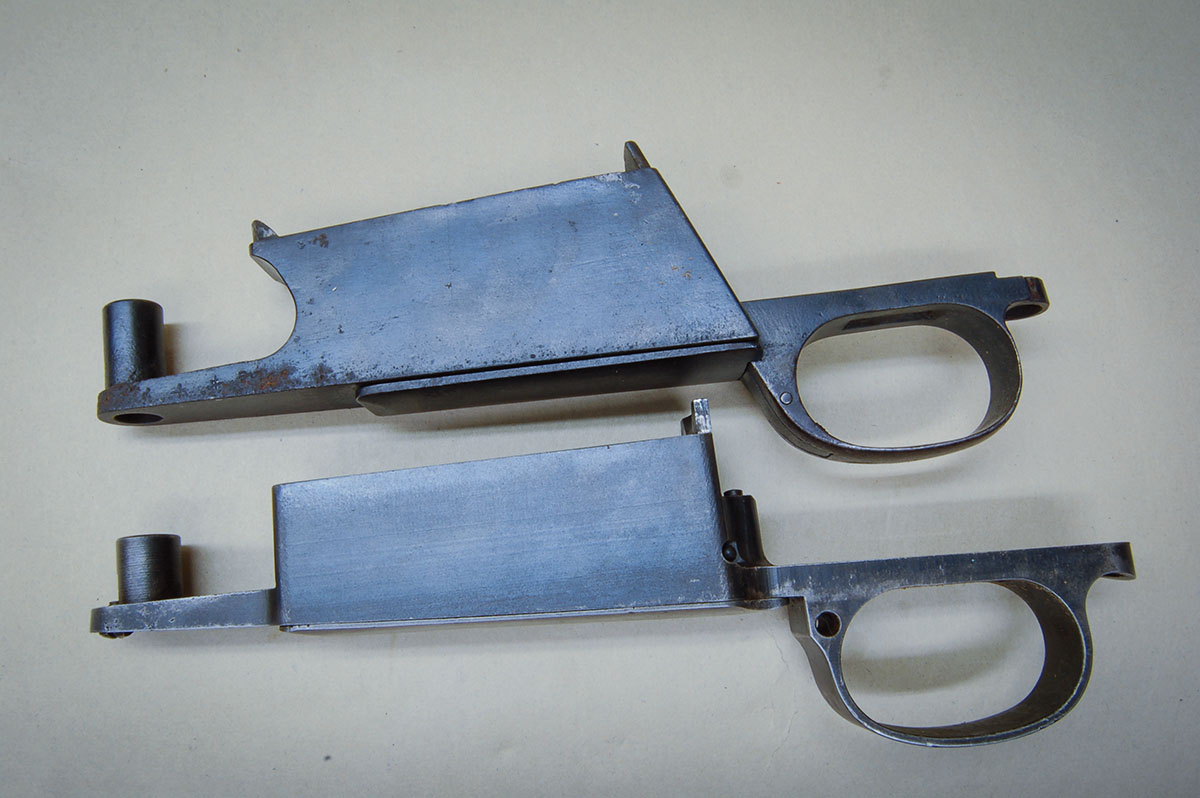
few hundred to perhaps 2000, depending on the reference source. This makes no sense unless they were made for export to Rigby, but they weren’t. The book Original Oberndorf Sporting Rifles by John Speed, Walter Schmid and Reiner Herrmann shows a photo of one of the .303s and states, “While this rifle was built with a slanted magazine, developed for Rigby, it was not an export rifle but was sold in Germany.” This made even less sense when Mauser sporters were also available in 7.92x57mm.
It was one of these rifles that had just walked into my shop, and it was a Mauser, with no British proof marks. A covering of wax had been painted on that someone tried to remove, but hadn’t succeeded very well. My friend said the “story” was that the gun had been hidden during the Allied occupation of Germany after World War II. I was then told to completely disassemble it and remove the wax so it could be shot! Yes sir!
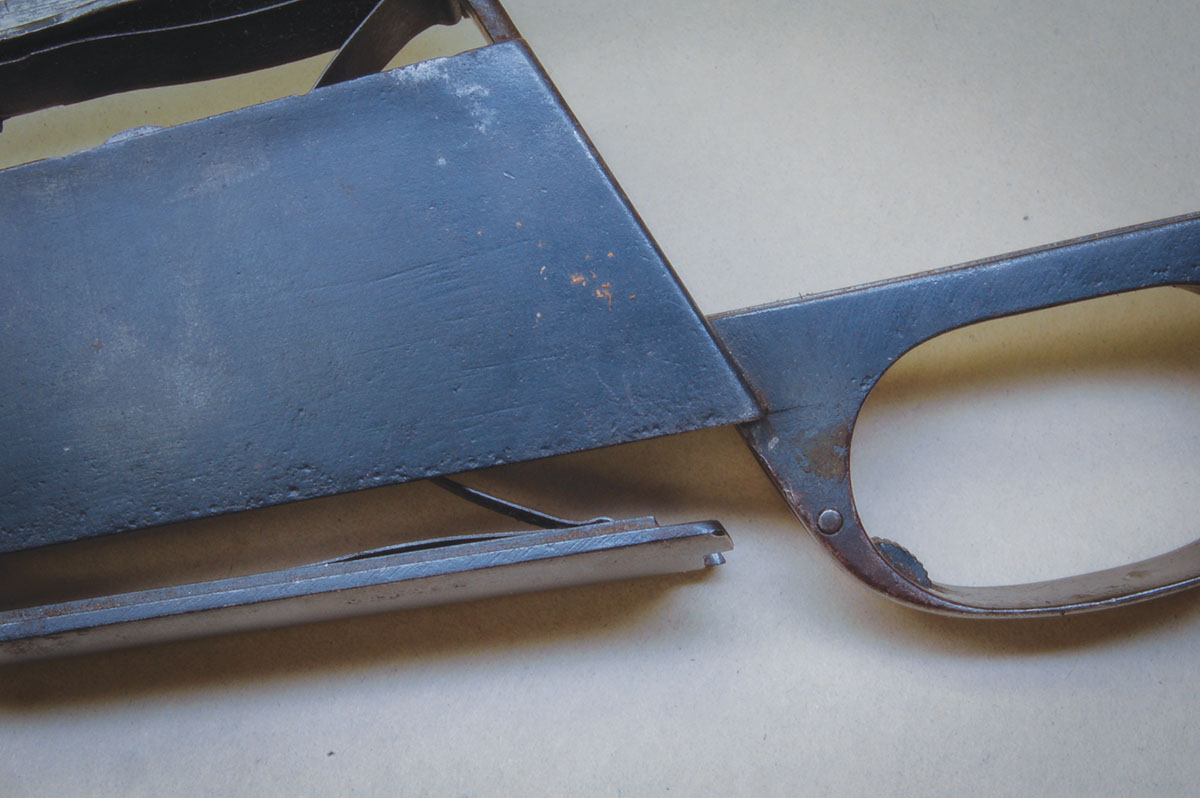
I don’t know what I was expecting, but when the stock was removed, there was simply a military Siamese Mauser action with a few sporter-type modifications. I knew this because· while the Siamese rifle hadn’t been seen for seventy years, they suddenly appeared on the U.S. surplus market in the early 1970s. As I recall, actions alone sold for $15 and complete rifles $10 more.
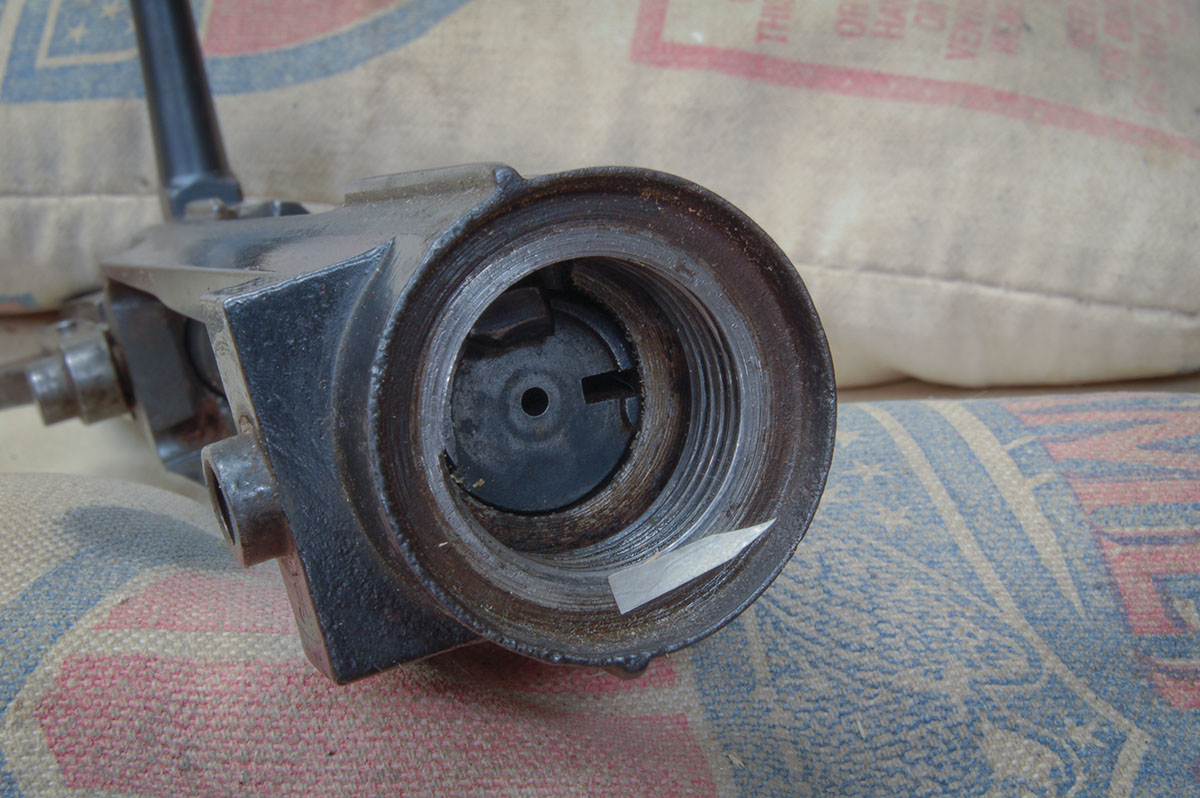
At first, no one knew what to do with them. A few outfits advertised rebarreling to 45-70, and at least one included 444 Marlin. The 45-70s have gained a reputation for not feeding very well. Also, when the bolt face is opened up to accommodate the wide 45-70 rim, the flange around the edge of the bolt face becomes so thin that it can break off, turning the gun into a single-shot. As for the 444 Marlin, I’ve never seen one.
The owner of the shop where I was working at the time bought three actions, installed 30-40 Krag barrels, and fit them into Reinhart Fajen sporter stocks. In the process, it was discovered that the 30-40 Krag wouldn’t feed reliably and sometimes popped out of the magazine. The problem was solved by replacing the Siamese spring and follower with a M98 military spring and follower. The follower is, however, a bit wide at the front and must be ground to fit into the Siamese box.
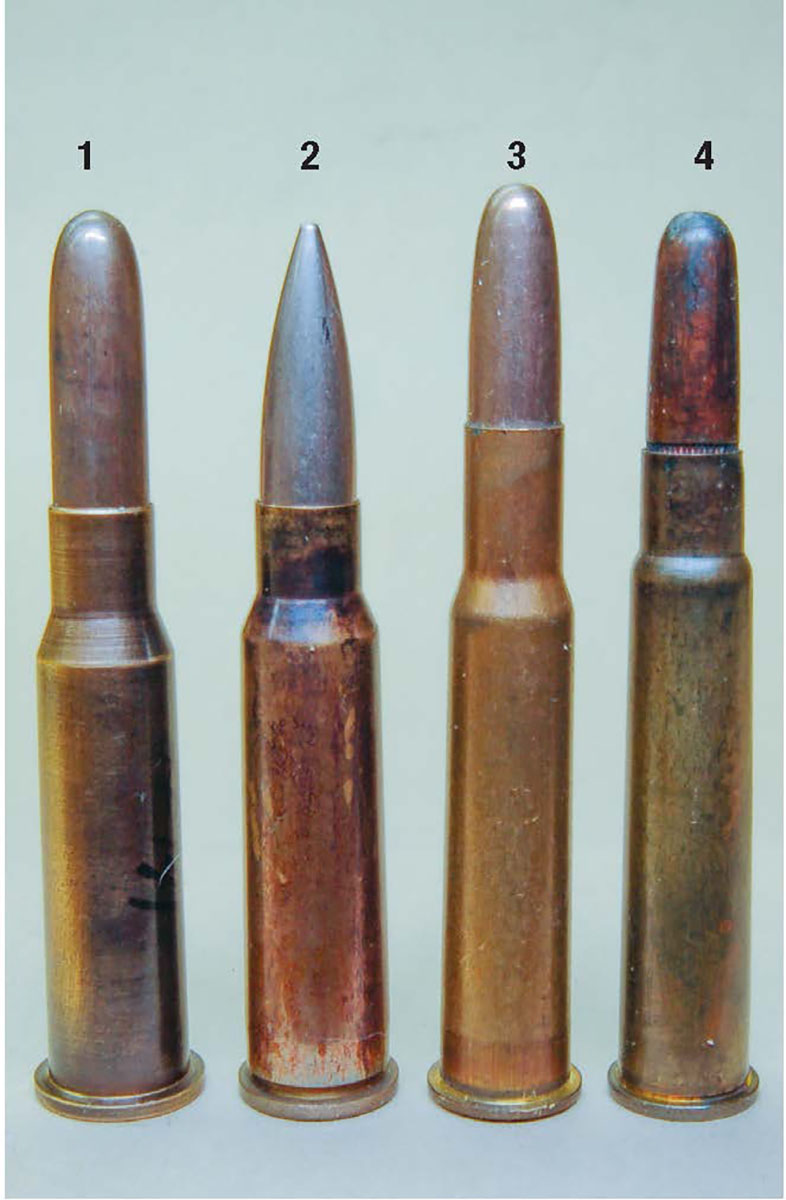
Besides rebarreling, there are other alterations riflefolk will want to make to Siamese Mauser actions. First is to remove the sliding breech cover and the rails it rides on. The cover is slid forward and a small retaining tab located on the rear underside is ground off using a Dremel Tool. Slide the cover off, then file the rails flush with the action body. The receiver will now fit down into a stock properly.
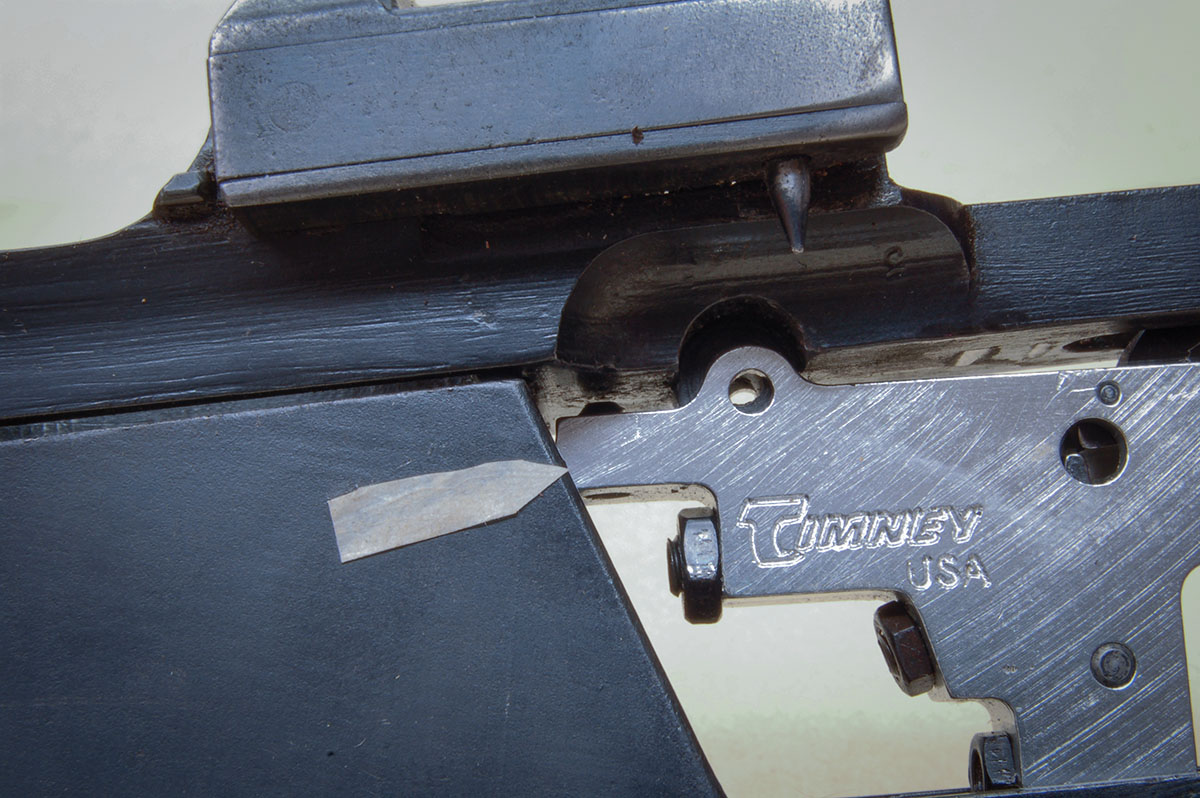
Next up is the trigger. Both the German and Siamese Mausers use two-stage military triggers. Installing a commercial single-stage is easy, but the housing of some will strike the rear of the magazine box. Just file the trigger housing until it fits. Don’t alter the magazine box.
Floorplates of both the Mauser and Siamese also have the same inside-the-guard sporter-style release. The 303 has a tab in the front and a cross pin, which hinges it to the magazine box. The Siamese floorplate just drops freely, military style. A lot of welding and filing can convert the Siamese, but it is hardly worth the considerable effort.
One thing that is worth the filing effort is removing the flange from the front of the receiver ring. It is there to anchor the rear of a wooden handguard. It is an annoyance when barrel fitting and stock inletting, so it is best removed. Be careful not to file on the front face of the action. When complete, the front of the receiver should be flat with no evidence of filing.
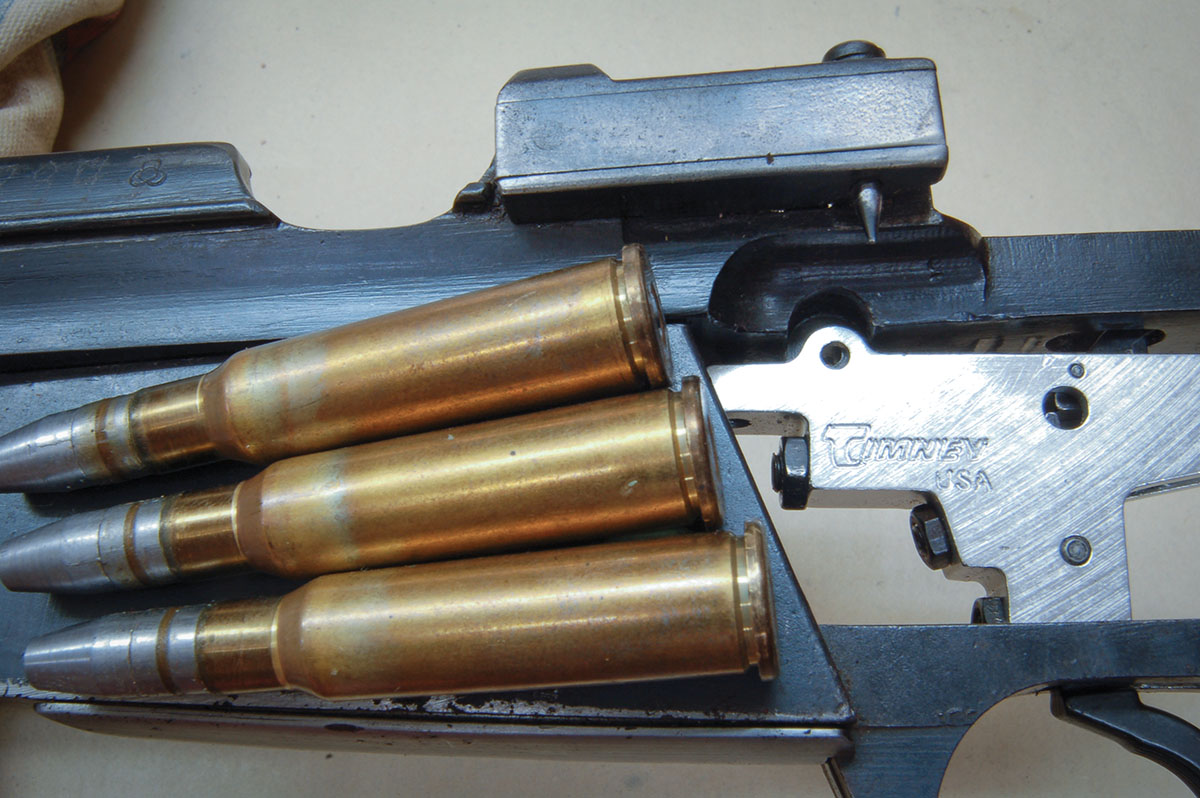
Next there is the straight Siamese bolt handle. Personally, I detest those things. Bending bolt handles and forging bolt handles (there is a difference) were covered in this column in Rifle (No. 254, January 2011). Making bending blocks to duplicate the shape of the Mauser 303 (or any Mauser sporter) was shown there; however, this profile will not clear a scope. The bolt handle must be forged for that.

Unfortunately, I have no photo of a complete rifle. My 30/40 was traded some years ago for a Springfield M1922, 22 rimfire. One of the actions shown has a 30/40 barrel installed, but time has not yet been found to stock it. I sure miss the passing of E. C. Bishop & Son and Reinhart Fajen, Inc., companies that provided 90 percent shaped and inlet stocks to serious gun folks. Their purchase and destruction were great losses for all of us, and so unnecessary.
Surprisingly, Siamese actions do not seem to be hard to find today. The two shown in the photos were picked up at local gun shows within the last four years, probably because the number of different rifles possible to build on them is limited. Nevertheless, the 303 sporter stands out. Photos of this rifle are on the internet and can be printed out to duplicate the barrel, stock shape and sights. Even though the stock will probably have to be made from a blank, it will be worth it to be the only kid in your group with an original (almost) slant-box M98 303 Mauser.


